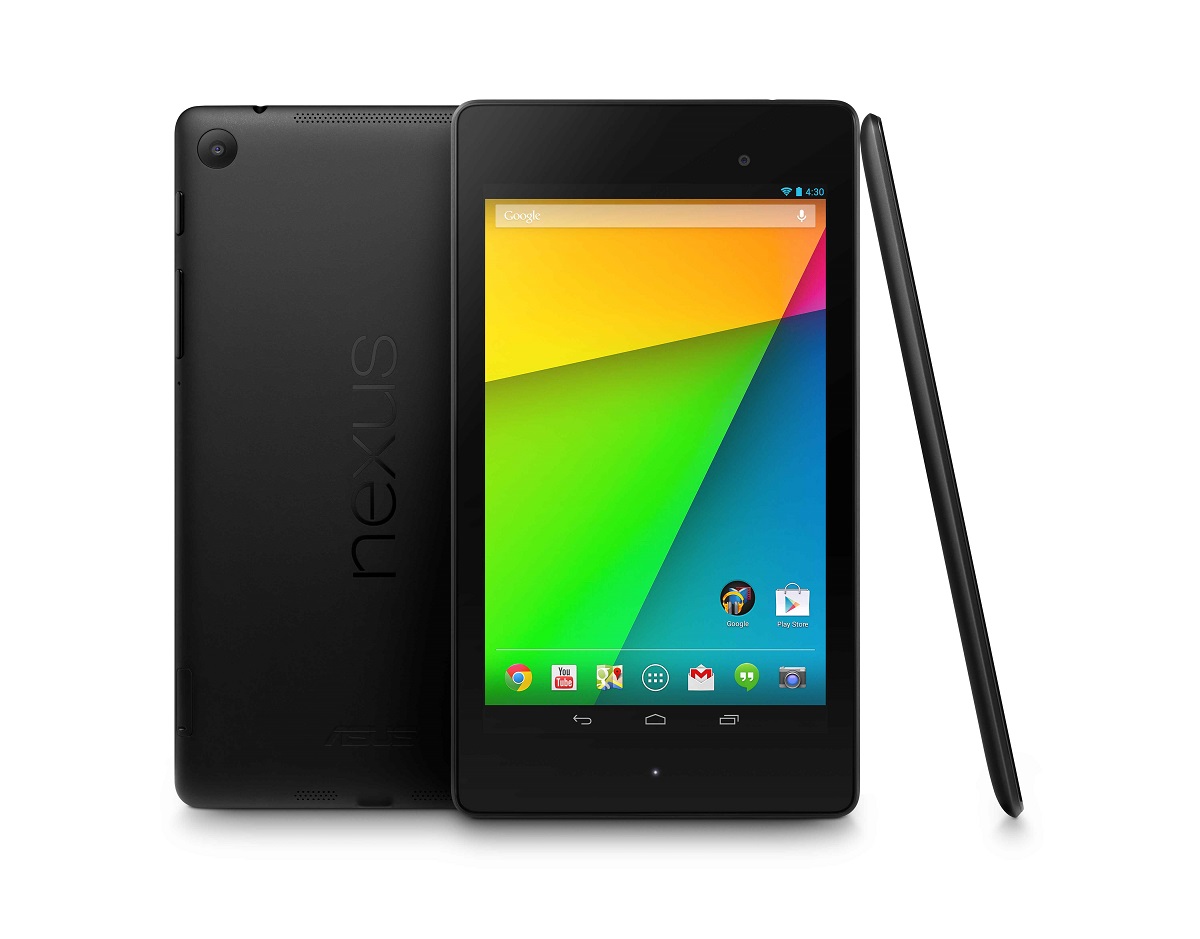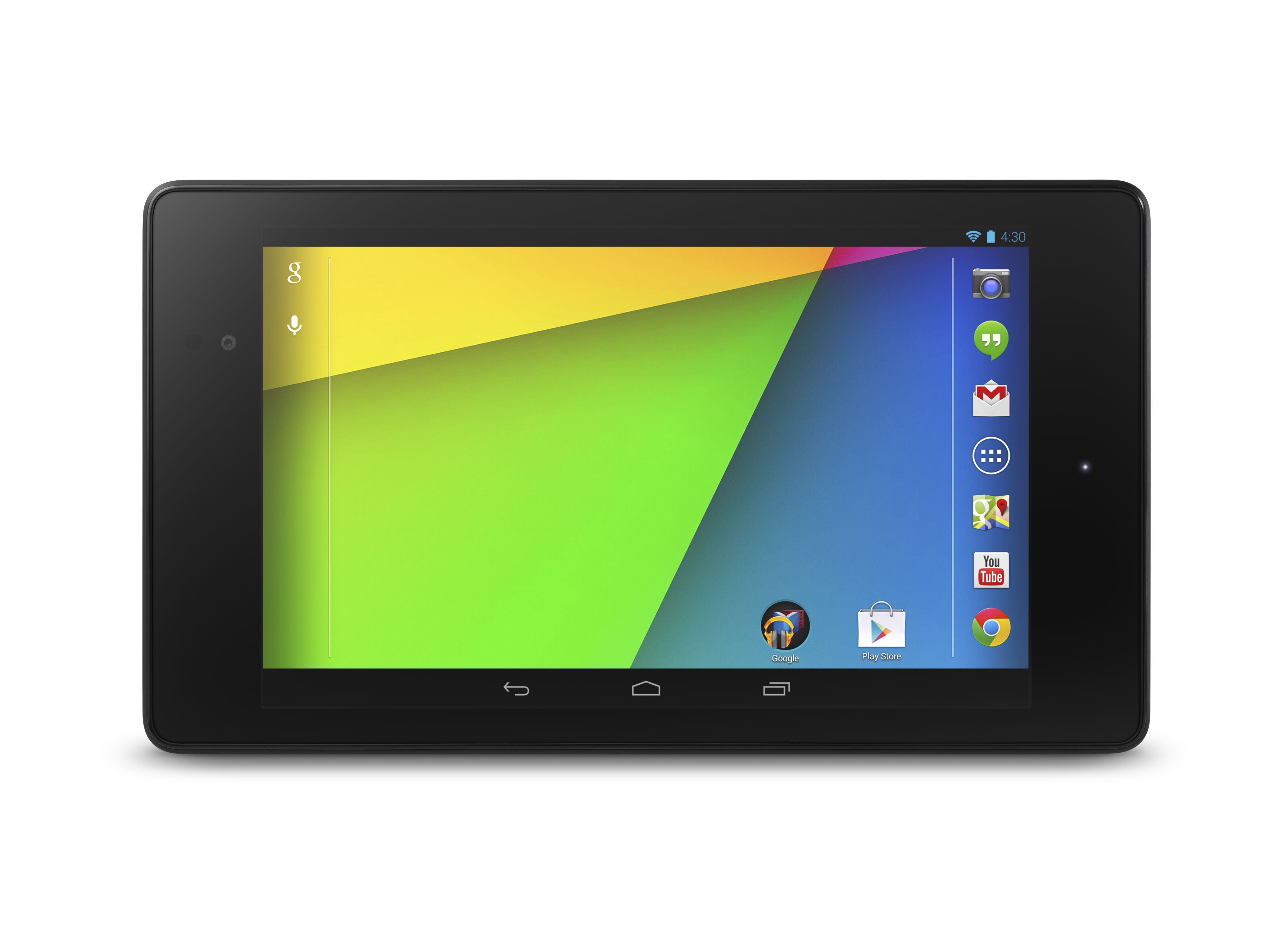Google Nexus 7 (2013) review
The best 7in tablet on the market returns with upgrades galore, making it the ultimate travel companion.


The Nexus 7’s screen bests every rival for pixel count and sheer quality. The components outstrip virtually everything out there – so performance is slick. The chassis is slimmer, lighter and more comfortable than before, and the 16GB and 32GB models cost less than £239. It'll also be first in line to get the Android 4.4 KitKat update.
-
+
Superb, high-resolution screen; Huge amounts of power; Great build quality; Good value
-
-
No microSD slot; Buttons too flush; Average camera

Google's first Nexus 7 blew open the budget tablet market by showing affordable slates could be great, and now it's released an updated edition that's raised the bar further. Targeted primarily at a consumer audience - and likely no match for the desktop/laptop - we explore its potential as a companion device for the on-the-move business user.
Dazzling 7in display
The undoubted star of the show is the screen. The 7in IPS panel provides the sharpest display that's available on any tablet. The 1,920 x 1,200 resolution pack 323 pixels-per-inch, which easily outstrips the 163ppi iPad Mini and even the 264ppi iPad 4. It's also an improvement on its predecessor, the Nexus 7 which had pixel count of 216ppi.
This makes it practically impossible to spot pixels, and the world-beating sharpness makes an impact across the whole device: text is clear, pictures/photography look crisp and games are sharper than on any other tablet. The high resolution only works against the Nexus 7 when web browsing it's here where low-resolution images stand out.
The high contrast and colour accuracy together with the stunning clarity makes this great for reading e-books and multimedia consumption.

The numbers back this up. We measured a retina searing brightness level of 540cd/m2, which bests the iPad Mini's 389cd/m2, and the black level of 0.51cd/m2 is good. Combine those measurements and you get a contrast ratio of 1,058:1 better than the iPad's 720:1 result. It's the best set of results we've seen from a tablet, and it means colours are vivid throughout, from distinguishable deep shades of black to delicate white tones.
Colour accuracy is great throughout, the IPS technology underneath means viewing angles are excellent, and it's made from hard-wearing Gorilla Glass so it should be able to withstand a drop. It's one of the best screens available on any tablet or smartphone at any price.
Pocket friendly companion
The screen is the most dramatic change in this year's Nexus 7, but the Asus-made device is also sleeker than the original. The weight has dropped from 340g to 290g, and it's 2mm thinner and 6mm narrower than the original 10.5mm, 120mm frame.
For the travelling worker, the Nexus 7 shapes up to be the ultimate companion. The pocket friendly dimensions and weight means you can slip it into a jacket comfortably and pull it out at a meeting to review notes, showcase videos or browse the web.

Asus has stepped up the design too. The silver band around the edge has been axed, and instead the tablet is entirely clad in black plastic, with a discreet Nexus logo across the back panel. The soft-touch material is comfortable, and the build quality concerns that plagued the first Nexus 7 have disappeared there's not a hint of creak or flex around this thin, light tablet's frame.
There's a micro-USB port at the bottom and a headphone jack at the top but, sadly, Google has omitted a microSD card slot so there's no chance to add your own storage. The power button and volume rocker are both situated at the top of the right-hand edge, and we've two minor complaints: they're close to each other, and they're flush with the tablet's body.
Get the ITPro daily newsletter
Sign up today and you will receive a free copy of our Future Focus 2025 report - the leading guidance on AI, cybersecurity and other IT challenges as per 700+ senior executives
Mike Jennings has worked as a technology journalist for more than a decade and has been fascinated by computers since childhood, when he spent far too long building terrible websites. He loves desktop PCs, components, laptops and anything to do with the latest hardware.
Mike worked as a staff writer at PC Pro magazine in London for seven years, and during that time wrote for a variety of other tech titles, including Custom PC, Micro Mart and Computer Shopper. Since 2013, he’s been a freelance tech writer, and writes regularly for titles like Wired, TechRadar, Stuff, TechSpot, IT Pro, TrustedReviews and TechAdvisor. He still loves tech and covers everything from the latest business hardware and software to high-end gaming gear, and you’ll find him on plenty of sites writing reviews, features and guides on a vast range of topics.
You can email Mike at mike@mike-jennings.net, or find him on Twitter at @mikejjennings
-
 ‘Phishing kits are a force multiplier': Cheap cyber crime kits can be bought on the dark web for less than $25 – and experts warn it’s lowering the barrier of entry for amateur hackers
‘Phishing kits are a force multiplier': Cheap cyber crime kits can be bought on the dark web for less than $25 – and experts warn it’s lowering the barrier of entry for amateur hackersNews Research from NordVPN shows phishing kits are now widely available on the dark web and via messaging apps like Telegram, and are often selling for less than $25.
By Emma Woollacott Published
-
 Redis unveils new tools for developers working on AI applications
Redis unveils new tools for developers working on AI applicationsNews Redis has announced new tools aimed at making it easier for AI developers to build applications and optimize large language model (LLM) outputs.
By Ross Kelly Published
-
 Google layoffs continue with "hundreds" cut from Chrome, Android, and Pixel teams
Google layoffs continue with "hundreds" cut from Chrome, Android, and Pixel teamsNews The tech giant's efficiency drive enters a third year with devices teams the latest target
By Bobby Hellard Published